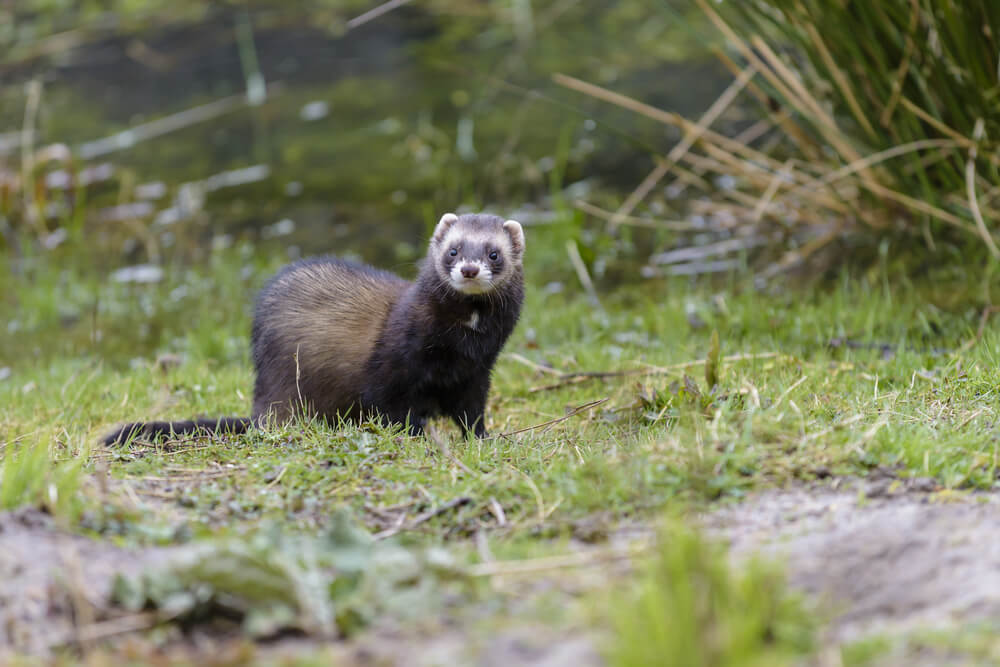European Polecat (Iller)

Characteristics:
The European polecat is a small, slender member of the weasel family, with a long, flexible body and short legs. Body length 35–45 cm, tail 12–19 cm, and weight 0.7–2 kg (males are considerably larger than females). The fur is dark brown to blackish, with a lighter underfur and a pale face featuring dark “mask-like” markings around the eyes. Polecats have anal scent glands, which release a strong musky odour when the animal is stressed or threatened.
Habitat:
In Sweden, the polecat is found mainly in the southern and central regions, especially in farmland, forest edges, wetlands, and near rivers and lakes. It avoids mountainous areas and is absent from Gotland. The species is mostly nocturnal and secretive, making it rarely seen in the wild.
Behaviour:
The polecat is solitary and nocturnal, spending the day in dens under tree roots, rocks, or barns. It moves quickly and quietly and is a skilled hunter. Although mainly terrestrial, it can also swim well. It is known for its strong bite and ability to kill prey larger than itself.
Diet:
The polecat is carnivorous, feeding primarily on mice, voles, frogs, birds, and eggs, but also eats insects and carrion. It often kills more prey than it immediately consumes and stores surplus food for later. Around farms, it may occasionally take poultry or pigeons.
Reproduction:
Mating occurs in March–April, and after a gestation period of 40–43 days, the female gives birth to 3–8 kits in May–June. The nest is built in a hollow tree, rock pile, or old burrow and lined with grass and fur. The young become independent by late summer.
Tracks and signs:
- Tracks: Five toes with claw marks; front paw about 3–4 cm wide. Step length 20–30 cm. Tracks often follow ditches, stone walls, or field edges.
- Droppings (scat): Thin, twisted, and dark, with hair and bone remains; has a strong musky smell.
- Dens: Under roots, in barns, rock piles, or abandoned burrows.
- Scent: Strong, musky odour, especially noticeable when the animal is alarmed or marking its territory.
Distribution:
The European polecat occurs throughout most of Europe. In Sweden, it is most common in southern and central regions, but has declined in some areas due to habitat loss, traffic mortality, and competition with the American mink.
Hunting:
The polecat is a legal game species in Sweden and may be hunted year-round, though hunting usually takes place in autumn and winter. Common methods include:
- Trapping (approved body-grip or live traps)
- Stalking or ambush hunting near farms and waterways
- Hunting with small dogs in barns or rock piles
It is hunted for fur and pest control.
Firearm class (Sweden):
Polecat hunting is done with class 1-4 rifles or shotguns (common pellet sizes no. 5–7).
Think for the hunting exam:
- Small mustelid with dark fur and pale facial mask.
- Active at night, lives alone.
- Eats rodents, birds, and eggs.
- Strong musky smell from scent glands.
- Tracks: five toes, found along ditches and stone walls.
- Hunted with class 1-4 rifle, shotgun, or traps.
- Ancestor of the domestic ferret.
